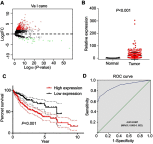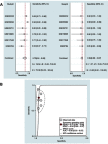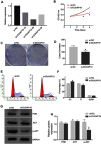Pseudogene DUXAP10 acts as a diagnostic and prognostic marker and promotes cell proliferation by activating PI3K/AKT pathway in hepatocellular carcinoma
- PMID: 31354289
- PMCID: PMC6572670
- DOI: 10.2147/OTT.S210623
Pseudogene DUXAP10 acts as a diagnostic and prognostic marker and promotes cell proliferation by activating PI3K/AKT pathway in hepatocellular carcinoma
Abstract
Background: Recently, the pseudogene DUXAP10 was shown to be overexpressed in various human cancers and emerged as a key cancer regulator. However, the roles of DUXAP10 in hepatocellular carcinoma (HCC) tumorigenesis and progression remain uncharacterized. Methods: Comprehensive analyses were performed to investigate DUXAP10 expression patterns, potential biologic functions, and clinical significance in HCC based on the data downloaded from the Cancer Genome Atlas (TCGA) and Gene Expression Omnibus (GEO) databases. DUXAP10 expression levels in HCC tissue sections and cells were verified using quantitative real-time PCR analysis. DUXAP10-siRNA was used to silence DUXAP10 in the Hep3B cell line to determine the roles of DUXAP10 in HCC cell proliferation. Results: DUXAP10 was significantly overexpressed in HCC, and DUXAP10 upregulation was closely associated with poor prognoses in HCC patients. DUXAP10 knockdown decreased cell proliferation and arrested HCC cells in the G1 phase of the cell cycle. Western blot analysis showed that DUXAP10 knockdown decreased p-AKT expression in HCC cells. Conclusion: Our study demonstrates that pseudogene DUXAP10 promotes HCC cell proliferation by activating PI3K/AKT pathway and could act as a potential diagnostic and prognostic biomarker for HCC patients.
Keywords: DUXAP10; HCC; biomarker.
Conflict of interest statement
The authors report no conflicts of interest in this work.
Figures






References
-
- Proudfoot N. Pseudogenes. Nature. 1980;286:840–841. - PubMed
LinkOut - more resources
Full Text Sources

